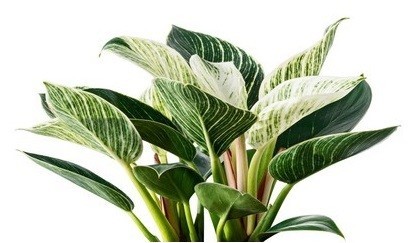Philodendron Plant Tissue Culture
Today, foliage plants play an increasingly important role in urban landscaping, especially at home, with the production of about 25% of the total floral product. Philodendron ornamental plants are one of the more popular Araceae foliage plants in recent years, mostly native to South America, with a wide variety of about 270 species. There are not only rich variations in leaf color, such as green, red, golden yellow, fuchsia, etc. but also different leaf shapes and plant shapes, such as sprawling and semi-sprawling.
 Philodendron plants are one of the important foliage
Philodendron plants are one of the important foliage
ornamental plants
We make limited space to cultivate Philodendron
seedlings in a short period of time, thus obtaining a large
number of high-quality seedlings.
Philodendron has the function of land scaping and ornamental and also has the function of absorbing harmful gases and purifying the air. In some areas where cultivation is not easy to bear fruit, Philodendron plants are still propagated using methods such as cuttings and dividing plants, which are slow to propagate and not suitable for large-scale production.
Lifeasible has established a stable culture system for Philodendron ornamentals using tissue culture and rapid propagation techniques of plants, which can not only provide a large number of high-quality tissue culture seedlings for production to meet the market needs but also provide high-quality materials for research and help the scientific progress of this genus.
- Propagation by division
- Propagation by cuttings
- Propagation by compression
Tissue culture service
In the tissue culture of Philodendron plants, we often select leaf-blade, petiole, rhizome, stem segment side shoots, and stem tip as explants to obtain regenerated plants.

Pathways of induction and multiplication
- Direct induction to form clumped shoots, induction and multiplication without the occurrence of obvious healing tissues, regenerated plants easily produce aerial roots, and direct transplanting of plants with roots has a higher survival rate. Most species of this genus are of this route.
- In the induction and multiplication, the healing tissue is formed before differentiation into seedlings, and the differentiated seedlings do not easily produce aerial roots. If robust plants are to be obtained for transplanting, seedling culture and rooting culture must be carried out first to obtain a high survival rate of regenerated plants for transplanting.
- The plants are first induced to form guard tissues and then proliferate as clumped shoots. The proliferation is also easy to produce regional roots. The induction process first induces reddish healing tissue, which differentiates into reddish clump buds after continued culture.
You want to sign a confidentiality agreement.
You have a specific plant species for your experimental needs.
You have a reliable and relevant cooperation project to discuss.
You are very interested in our project or have any questions.
You need an updated and detailed quotation.
For research or industrial use.

 Philodendron plants are one of the important foliage
Philodendron plants are one of the important foliage

